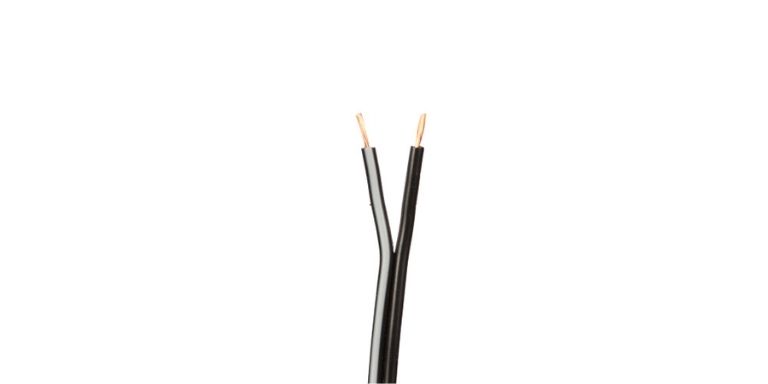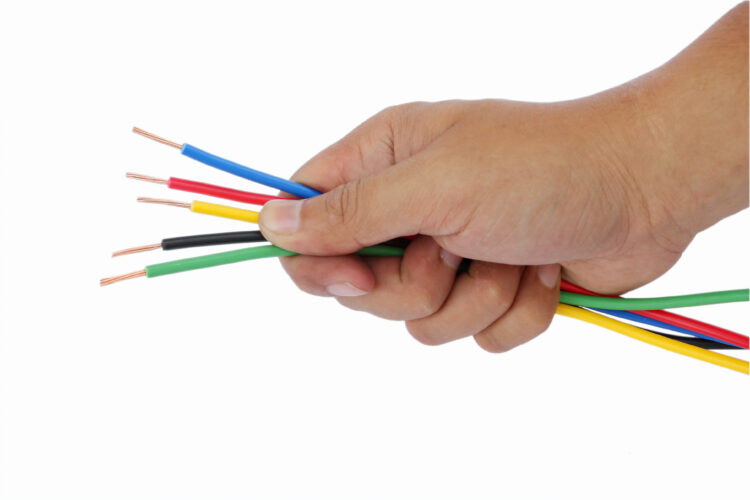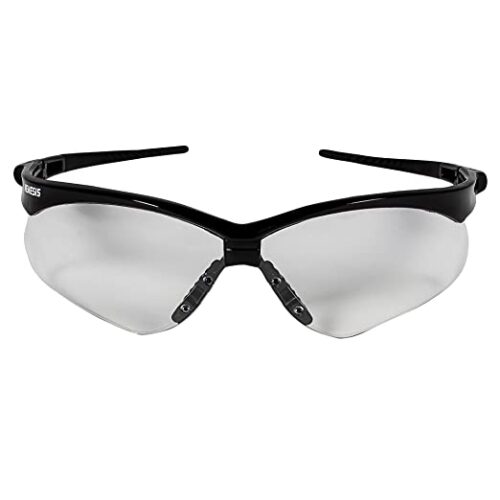Wire Colors: Black and White Wires – Which Is Positive?
If you’ve got a home improvement project coming up that involves working with electricity, we want to help guide you through that process. This article will delve into helping you identify the positive and negative wires – specifically the black and white wires – and provide tips to ensure you’re working safely.
We’ll explain the differences between these two types of wires and offer valuable advice for working with electrical systems in a way that keeps you and your home secure.
Before we begin I just want to reiterate that it is important to always exercise extreme caution when dealing with electricity. If you have any questions or doubts about your abilities, please do not hesitate to seek the assistance of a professional. Remember, electricity is not something that should be taken lightly.
*This post may contain affiliate links and we may earn a small commission when you click on the links at no additional cost to you. As an Amazon Associate, we may earn a small commission from qualifying purchases from product links that we share on this site. We thank you in advance for your support!
Black Wires and White Wires – Which is Positive?

The positive wire, which is commonly referred to as the “hot” wire, is typically colored black. It links the switch or light source to the breaker panel and carries an electric current. The neutral wire also called the white wire, is associated with negative polarity, and its function is to channel any unused electricity or current back to the circuit breaker panel. You should be mindful of the white wire as it could still conduct electricity, leading to hazards if mishandled.
Continue reading to dig into more details about the different wire color codes.
Electrical Wires – Black Wires and White Wires
To connect the fixture, attach the white wire to the hot wire termination. The other wire could be the switch’s hot wire lead and the other screw terminal. This functions as the second hot wire for the switch loop. To prevent fraying, wrap the white wire with black electrical tape on both ends. This indicates that it is being used as a hot wire and has been coded accordingly.
To properly connect the new cable, the ground wire must be connected to both the switch and fixture sides. If the switch or fixture box is made of metal, it must be grounded, so the ground wire should be connected to a pigtail connected to each box. The “hot” wire, which is black, carries energy from the breaker panel to the light source or switches. The white wire is referred to as the standard or neutral wire.
To efficiently utilize unused power, this cable is designed to return it to the same breaker panel. In order to connect it, the black cable should be attached to the fixture box’s black “hot” wire and the terminals of the single-pole switch.
Which Wire Is Positive between Black and White Wires
NMB cables are designed with two conductors, each of which is coated with plastic insulation. These conductors are responsible for carrying electrical current, with the positive wire known as the “hot” wire and the negative wire as the “neutral” wire. The hot wire, marked with black insulation, carries a current of 120 VAC and is responsible for supplying power to the circuit. The neutral wire, on the other hand, is marked with white insulation and is connected to the earth’s ground. Current flows through the hot wire and returns through it, while the neutral wire serves as a return path for any excess charge. This design ensures that the electrical circuit remains stable and safe for use.
What is the Purpose of the Black Wire Color
Electricity is a powerful force that requires careful management to avoid accidents and ensure safety. In electrical circuits, it is essential to identify the hot wire responsible for carrying the current, which is identified by its black insulation. This simple yet effective design ensures the stability and safety of the electrical circuit. If you were to mix up the hot and neutral wires, you could end up with an electrical shock or even a fire.
Black wires are conductors that serve as vital components in various electrical circuits, enabling the transfer of energy from the power source to the outlet through a transformer. They are often used in lighting systems, appliances, and electrical motors. To ensure the safe transfer of energy, it is crucial to handle black wires with care and use appropriate extensions to prevent any mishaps.
What is the Purpose of the White Wire Color
Understanding the role of the neutral wire is crucial for anyone working with electrical systems. The white wire in electrical wiring is known as the neutral wire. Its purpose is to provide a return path for the current that flows through the circuit. Think of it like a loop: the current flows out from the source (such as a power plant or a battery), through the hot wire, and then back through the neutral wire to complete the circuit. Without the neutral wire, the circuit would not be complete and the electricity would not flow. This wire is particularly important for devices that use alternating current (AC), such as appliances and lights.
Connecting the Neutral Wire
One thing to note is that the white wire should always be connected to the neutral bus bar in the electrical panel. It should never be connected to a ground or hot wire, as this can be dangerous and cause electrical shocks or fires.
In some cases, you may also see a white wire that has been marked with black or red tape. This indicates that it is actually a hot wire and should be treated as such. However, this is not the norm and the standard for electrical wiring is that white wires are neutral. Failure to connect the neutral wire correctly can result in electrical shocks, fires, or damage to appliances and other devices. This is why it is crucial to seek the help of a qualified electrician if you are unsure about your wiring or need assistance with electrical repairs or installations.
Overall, the neutral wire plays a crucial role in electrical systems, providing a safe and efficient way for current to flow through circuits. Understanding how to properly connect and use the neutral wire is essential for anyone working with electrical systems, and can help ensure the safety and effectiveness of electrical installations and repairs.
How to Identify Positive and Negative Wires in Different Situations
When it comes to identifying electrical wiring, the most commonly used method is through wire color coding.
DC (Direct Current) Power
DC Powered electronics typically have 2-3 electrical wires. This type of power is commonly found in batteries, solar cells, fuel cells, and small electronic devices. The term “direct current” is used because the electrical current flows in only one direction. To distinguish the wire colors, follow these steps:
-
Red Wire is positive.
-
Black Wire is negative.
-
White Wire serves as the ground (or neutral in DC) if present
-
When dealing with two black wires, one of which has a white stripe, it’s important to note that the striped wire is negative while the plain black wire is positive.
AC (Alternating Current) Power
AC power typically has 3 or more electrical wires. It is used in power outlets and light fixtures in standard home settings with currents ranging from 120, 208, or 240 volts. This type of wiring has multiple phases in place, with different color codes for each phase as seen below.
-
Black Wire: The black wire is a phase 1 hot wire, which means it’s a positive or live wire.
-
Red Wire: The red wire is the phase 2 hot wire, so it is also a live or positive wire; however the black is the main positive wire.
-
Blue Wire: The blue wire is a phase 3 hot wire (if it’s present).
-
White Wire: The white wire is neutral. It’s important to note that neutral is separate from the ground in AC wiring.
-
Green Wire: The green wire is the ground wire (if present).

While the wires themselves are identical on the inside, the outer coatings come in various colors. However, there are other ways to distinguish which type of wire you’re dealing with electricity
Appliances Plug
Electrical appliance plugs do not possess a distinct positive or negative side. Instead, they are composed of two separate components: the “hot” wire and the “neutral” slot.
Line Cord or “Zip Cord”
When it comes to line cords, it’s important to understand the different wires and how to identify them. The two main wires in a line cord are the neutral wire and the hot wire. Let’s take a closer look at how to identify each one.
Ribbed Side: The ribbed side of the line cord indicates the neutral wire. If you are wiring a line cord plug, the ribbed wire should connect to the wider or neutral space on the plug itself. This ensures that the current flows back to the power source safely.
Smooth Side: The smooth side represents the hot wire. If you are wiring a line cord switch, you need to make sure that the switch interrupts the “hot” or smooth wire. This way, the electrical current will be interrupted when the switch is turned off, preventing any potential shock hazards.
White Stripe: If you notice a white stripe on one side of the line cord, this indicates the neutral wire. It’s important to pay attention to these markings to ensure that you are wiring the cord correctly.
Transparent Line Cords: If the line cord is transparent, you may be able to see that there is a silver wire (neutral) and a copper-colored wire (hot) wire. This provides an easy way to identify the wires and ensure that they are wired correctly.
Speaker Wire
-
Copper Wire: In a standard wire utilized for speakers and amps, the positive wire is identified by its copper color
-
Silver Wire: The negative wire is recognized by its silver strand.
These wires are often twisted together in a transparent casing.
Important Safety Tips to Follow While Working with Electrical Wiring
Working with electrical wiring can be a challenging and risky task if you’re not equipped with the right knowledge and safety gear. To ensure your safety and the safety of others around you, it’s important to follow these essential tips when working with electrical wiring to avoid electrical injuries.
Shut off the Electricity
First things first. Turn off the electricity in the project area before starting any work. Failure to do so could lead to electrical fires or result in serious injury or even death. Live wires are extremely dangerous and should never be touched under any circumstances. Even if you’re confident in your abilities, it’s not worth taking the risk. Always assume a wire is live until you’ve confirmed otherwise with a voltage tester. To ensure your safety and avoid any potential disasters, always turn off the electricity in the area before beginning any electrical work. It’s better to be safe than sorry!
Wear Proper Safety Gear
When dealing with electric wiring, it’s imperative to prioritize your safety by wearing appropriate gear. Insulated gloves serve as a crucial first defense against potential electric hazards. These gloves are crafted from materials that can withstand high voltage and protect you from the impact of the electrical current. In addition, wearing safety goggles can shield your eyes from any sparks or debris that may arise while working with wires. To increase safety when working with electrical wiring, it’s important to wear non-conductive boots as well. These specialized boots are designed with materials that prevent electrical conductivity, providing protection in case of accidental contact with an electric current.
Check out this top-rated PPE Gear to help keep you safe during your upcoming project.
Use the Proper Tools
When dealing with electric wiring, it is imperative to use the correct tools so you avoid the risk of electrocution. To minimize this risk, it is recommended to use insulated tools like this set from Klein Tools. These tools are specially rated for working with electrical wiring. Along with insulated tools, I also recommend always keeping a Voltage Tester, GFCI Outlet Tester and Non-Contact Voltage Tester on hand. It is crucial to always exercise caution when working with electrical equipment.
Don’t Be Afraid to Ask an Electrician
When it comes to handling electric wires, it’s crucial to exercise caution and good judgment. If you find yourself unsure about any aspect of the process, it’s always best to reach out to a qualified electrician for assistance. They have the knowledge and experience necessary to ensure that the job is done safely and correctly, minimizing the risk of injury or damage. Remember, safety should always be your top priority when working with electricity. By following these simple tips, you can stay safe and prevent any accidents or injuries when working with electricity.
The tips will also help connect a 15 amp switch to a 20 amp circuit.
FAQs
If both wires are black, how do identify the positive or which positive ones?
A multimeter can tell which one is positive or negative. For the red terminal connect the black one. And for the black terminal connect the second black wire. If the tester indicates voltage, the wire contacting the red terminal is the one with power.
What happens if I connect the white wire to the black wire?
If the bare wires touch each other, there is a risk of a short circuit and a significant spark. To avoid this, it is essential to connect both the black and white wires before turning on the switching power. When the power is switched on, a twin spark may occur at the fuse or breaker.
Do white wires have power?
White wires indicate neutrally charged wires. However, if not handled appropriately, neutral wires may transport electricity and offer a risk of electrocution. Power returns to the service panel using white cables. If not handled appropriately, both hot and neutral wires can be dangerous.







